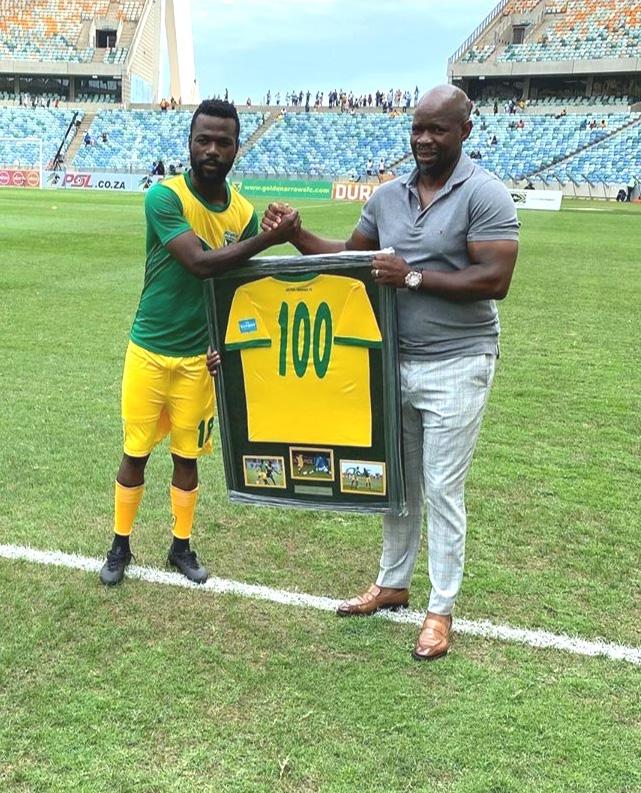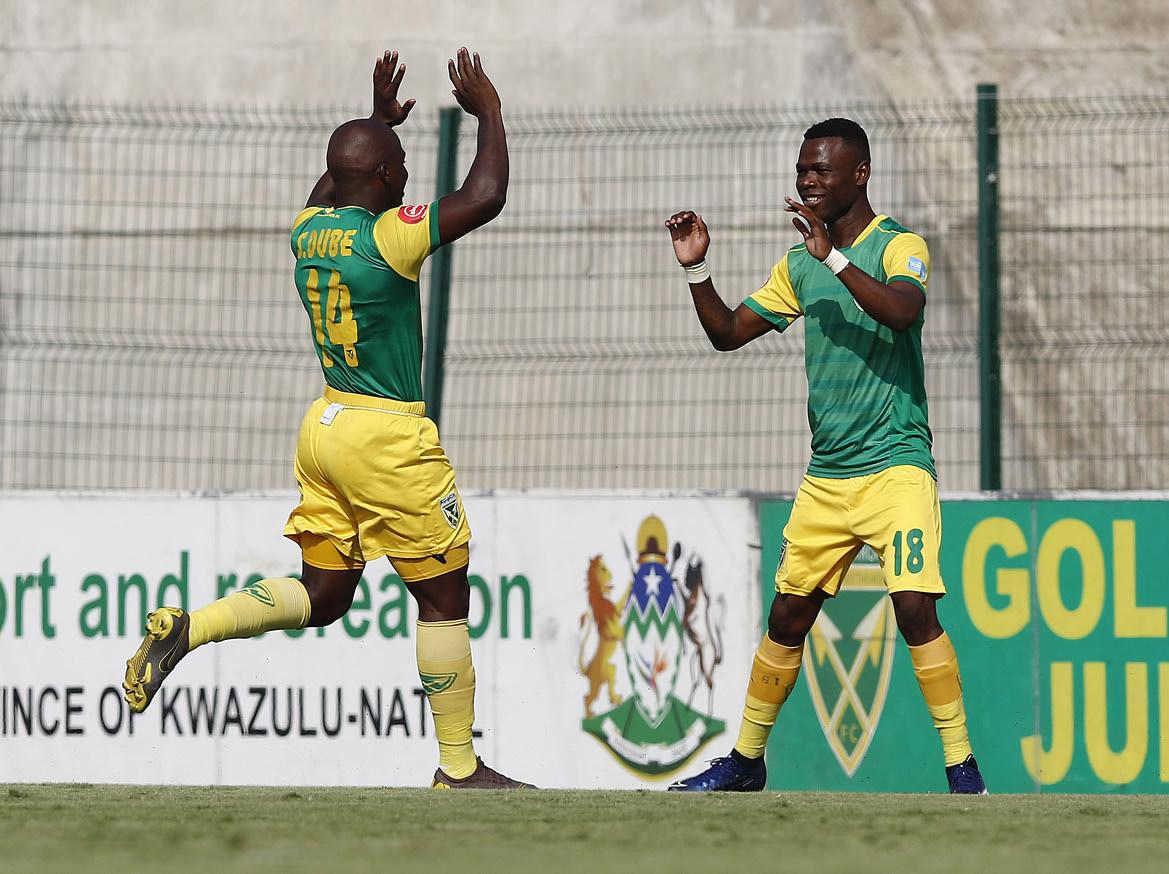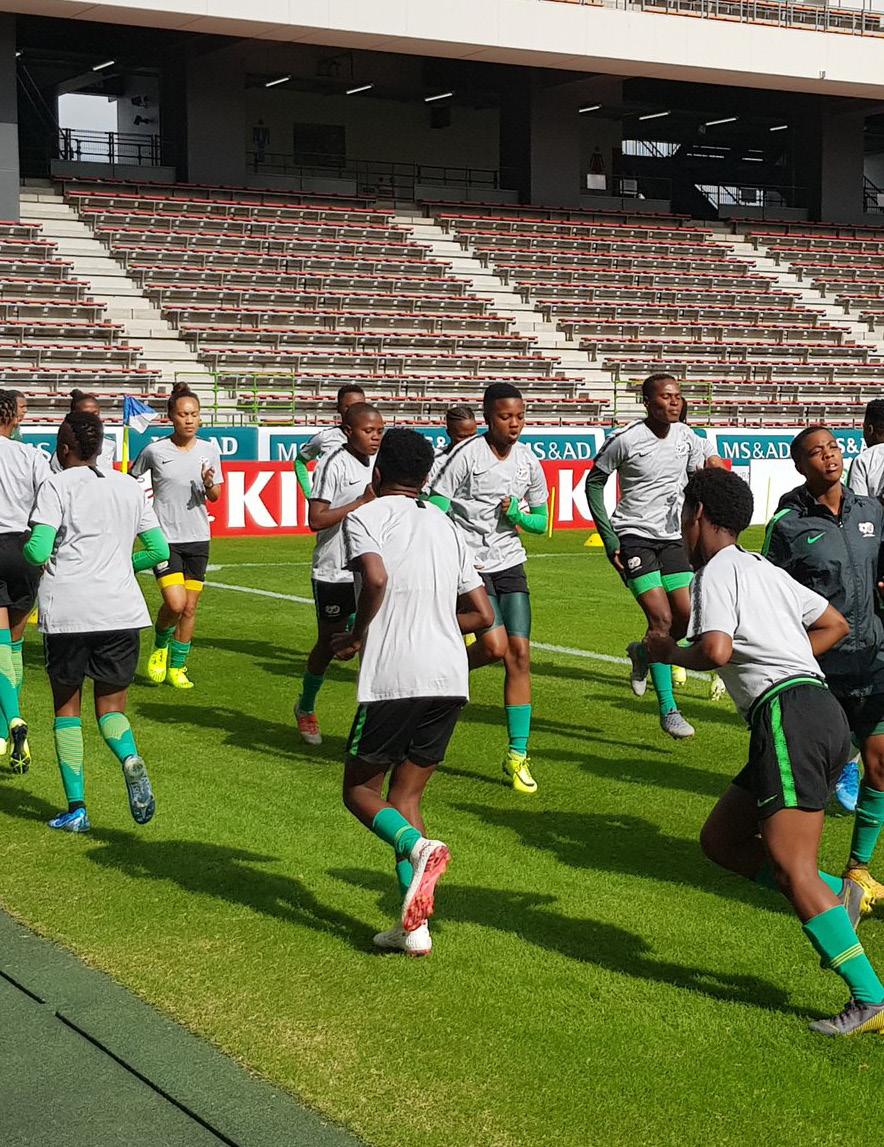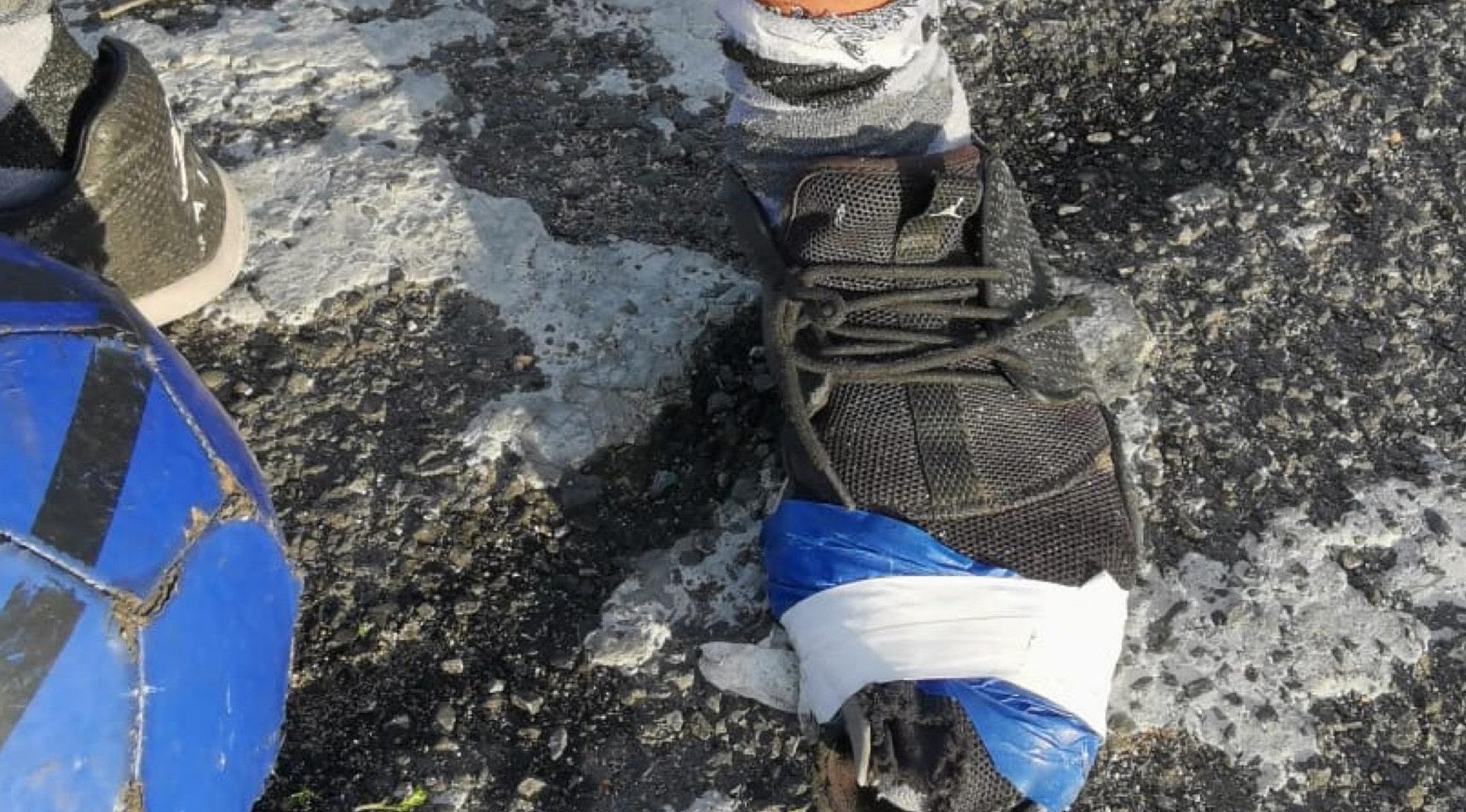
15 minute read
ZELA EXCLUSIVE WE CORNER ‘THE KNOXMAN
BY ZAAHID NANABHAY
THE KNOXMAN
ZIMBABWE’S SILENT KILLER TAKES THE PSL BY STORM
Wilfred Mugeyi, Gilbert Mushangazike, Knowledge Musona, Benjani Mwaruwari, Peter Ndlovu, Khama Billiat – the list of Zimbabwean strikers who bossed the Absa Premiership is long. However there’s one key name which is quietly being engraved on it and that’s Knox Mutizwa.
Fact check: no player has scored more goals than ‘The Knoxman’ in the Absa Premiership over the last three seasons. The Soccerzela team sat down with the former Zimbabwean Premier League golden boot winner, to gain insight into his incredible consistency in finding the back of the net. After coming through the ranks at Zimbabwean giants Highlanders, Mutizwa bagged the Top Goal Scorer award in the Zimbabwean top flight at the tender age of 21, after scoring 14 goals in just 17 appearances. He was soon snapped up by Bidvest Wits in South Africa in 2016. However, things did not work out as planned and Mutizwa was shipped off to Golden Arrows on loan during the January transfer window later that season; and as the saying goes, ‘the rest was history’.
Q: Tell me a bit about your journey into football, when did it all begin?
A: I started paying football when I was small. I can remember as early back as Grade 4 and 5. I’d win small trophies in primary school football for my school. From then I realised I could really play. My parents would get invited to my school to collect my trophies for being the best player. So yes, at a very young age.
It was in high school where I decided: in the morning we’d go to school and in the afternoon we’d have training that was during my time at the Highlanders development team. I was then promoted to the first team.
Q: How did you end up coming to South Africa from Highlanders? Were you scouted by Wits?
A: First of all, I came to South Africa to play for Bidvest Wits because Wits scouted me from Highlanders. I remember back then SuperSport 9 would televise our Zimbabwean league games. I was the top scorer, so Wits called me for trials – they were impressed with me and signed. Unfortunately I didn’t get the opportunity to actually play at Wits

and they sent me on loan to Arrows for 6-months. I managed to score (I think) 5 goals in 6 months and that’s when Arrows decided to sign me permanently.
Q: How would you rate the standard of football in South Africa compared to that of Zimbabwe? What were some of the key challenges you faced when you just moved here?
A: I think the standard of South African football is very good especially pace wise and everything, is far better than Zimbabwe.
To tell you the truth, when I arrived here it was tough because I was used to training in the afternoon. Here, we were training in the mornings and everything and everyone is so professional here. So to adapt and get used to that level of professionalism was tough for me,
but thank God I managed to adapt and I’m now used to it all. But back then it was tough.
Q: You’ve been consistently scoring goals for Arrows: 16/17 - 5 goals 17/18 - 7 goals 18/19 - 11 goals 19/20 - 11 goals* These numbers are highly impressive for the PSL. What is the secret behind your consistency?
A: I’ll tell you! When I left Zimbabwe I won the Golden Boot. My drive is to win the Golden Boot in whichever league I play in. So every season I tell myself: “Eish! Last year I didn’t achieve my goal so this season I must work hard.” This keeps building me to improve. I will only be happy when I win the Golden Boot, so everyday I push myself to reach that level.
Q: You’ve represented Zimbabwe on a handful of occasions which included the 2018 Africa Cup of Nations Qualifiers. However despite traveling to Egypt for AFCON 2019, you were named on the bench for Zimbabwe’s 3 group stage matches. Were you disappointed by not being given a chance to get some minutes? What was your Egyptian AFCON 2019 experience like in general?
A: Eish, you know when we were playing in the AFCON Qualifiers, I played in some big games. So when we went to the Egypt I really wanted to play but sometimes in life if you don’t get the opportunity. It’s a learning curve for you so even though I never played and was on the bench, I was still happy to be there. Obviously I was a little disappointed because I didn’t get a chance at all but that’s why I want to improve – get another opportunity to play at the AFCON in the future.
Q: What is it like working with coach Steve Komphela? In your opinion, how has coach Steve impacted your game and life?
A: To tell you my brother, Coach Steve Komphela is an excellent coach. Ever since he came to Golden Arrows he’s
HARD WORK AND LISTENING IS KEY
changed everything both on and off the field. The way he coaches, the way he encourages people and his level of professionalism can change you as a player. I can say he’s one of the best coaches on the continent and in the PSL. He’s a good coach.
Q: What are some of your long term goals in football?
A: My long term goals are playing overseas. I’ve always seen myself winning the PSL trophy or something big. You know, it’s every boy’s dream when he plays football to want to win trophies and also play overseas at some point.
Q: Who is the toughest defender to face in the PSL in your opinion and why?
A: Eish it’s quite difficult to choose one. I can say Thulani Hlatshwayo is hard to face, he doesn’t give you breathing space and is always marking you! Daniel Cardoso also –whenever we play Kaizer Chiefs he’ll ensure you don’t breathe! Even in training, Nkosinathi Sibisi is very difficult to beat.
Q: Have you been approached by other PSL teams or overseas teams given your consistently high level of form?
A: They speak to my agent. I just want to play and not get involved in that aspect. So, I don’t know anything about this.
Q: If you could offer young football hopefuls one piece of advice, what would it be?
A: I can tell the young footballers if they want to be a professional they must start to be disciplined at a very early age. Hard work and listening is key. Take a lesson from all coaches even if you think it’s unnecessary.
Q: How do you think the season should end given the Coronavirus pandemic?
A: I know we’re in a difficult period where football doesn’t matter right now, but my wish is to finish the season.
Q: How many goals were you targeting at the beginning of the season?
A: My target was 16 to 19 goals. It’s still possible. There’s 6 or 7 games to go, I think I can atleast get close. Ù

UNITED BY FOOTBALL, DIVIDED BY BUSINESS
BY PRO PHILANI
In the history of South African football, no tournament brought as much joy and excitement to fans as the one-day season curtain raiser tournament – the Iwisa Charity spectacular or just; the Charity Cup did. Where teams now struggle to fill up stadiums across the country, I reminisce over what once was a regular, sold-out affair which generated interest from one-and-all.
The one day football extravaganza began in 1986 and was played in small stadiums across the country. South African football was affected by racial segregations due to the apartheid regime in the early 1950s.

These meant that no interracial football matches could take place. In 1971 we saw the first attempt at uniting the apartheid state through sport. Though South Africa was banned by FIFA to compete on the global stage, the national football league was more than enough for locals. Orlando Pirates were the
first league champions, AmaZulu followed in 1972, Pirates again in 1973, newly formed Chiefs in 1974, while Pirates once again trumped in 1975.
It was in 1985 when the organization of football moved from NPSL to NSL. We saw the first championship of the then new era Durban Bush Bucks. In 1986 the first spectacular event took place with Chiefs winning the maiden edition. As years went by, the tournament earned more coverage in print media and on radio stations. It was in the 1990s when wider audiences – through television –began to witness the spectacle. League champion of 1989, Chiefs, defeated arch rival Pirates 4-2 in the 1990 final and the following year (1991) saw defending league champions (1990) Sundowns, winning it 1-0 against Chiefs.
The Iwisa Maize Meal Charity Spectacular was like an exhibition for football. It was the PRO’s stage to showcase their poetic style of football. No one came close to Kaizer Chiefs’ PRO at that time, Louis Tshakoane. The man had an art for selling out a match. He had words of brilliance to sell even an average player to masses. Tshakoane’s competition was none other than the Golden One of Mamelodi Sundowns, Alex Shakoane. These gentlemen dominated airwaves. They dominated print media. It was always about Goldfinger vs Sprinter on the touch line. In the stands it was not about the professionals but rather it was about fans from the four chosen teams coming together to celebrate football peacefully. You see, South Africa had a history of violence. Political violence was still fresh in people’s minds and lives. The new 1990s South African era was a new lease of life and hope. Nelson Mandela was coming home. There were the talks of the unbanning of the ANC. South Africa was alive with possibilities. What was the other way of uniting supporters other than through football? It was all about the fans chanting songs of joy, watching their stars, new signings, tactics and new bragging points.
Talks of reinstating South Africa were initiated back in 1991 and the country’s leading administrators from different leagues had come together with SAFA to plead with FIFA to reinstate South Africa back onto the international football map.
Domestically, the national league was getting stronger and more recognised. Every season would begin with the Iwisa Maize Meal Charity Spectacular at the newly built stadium in Nasrec – FNB Stadium. The newly built FNB was going to be the new home of the tournament – it’s still the biggest stadium in the country. For the organizers, it was an easy decision to make because it was a suitable venue to accommodate the masses who’d come out and enjoy the full-day football extravaganza. The charity spectacular would give fans an opportunity to vote for the team of their choice. Four teams with the most votes would be pitted against each other in semi-finals, with a final being played later in the day. The tournament was also an indication of what to expect in the coming season. If your team didn’t make it, it was a bitter pill to swallow.
Kaizer Chiefs and Orlando Pirates were regular features at the tournament because of their huge following. Teams like Mamelodi Sundowns, AmaZulu, Bloemfontein Celtic, and Moroka Swallows would
battle for the last tow spots. If their team didn’t make it, fans needed to wait for BP Top 8, an 8-team tournament, to know who their favorite club had signed.
A day for players
It used to be a day to remember or forget for players. In this tournament, players had an opportunity to make names for themselves. It was in such tournaments where commentators would give direction to lasting nicknames of these players. The crowd would cheer a player’s name if he’s in possession like ‘Aaaaaaaaaaace’ or ‘Shaaaaaaaaakes!’ Such players were crowd favorites. Irrespective of the club you followed, the cheers were stronger than the boos, and it’d become a nightmare for such players if they were cause for embarrassment.
Another notable embarrassment would be if the club was knocked out in the first match of the day. This meant no bragging rights and less coverage in print media. Print media was an extremely powerful tool for clubs in the 1990s. The first match would kickoff as early as 8:30am. It didn’t have the privilege of a wider audience on the stands because around that time, people would only be making their way to the stadium from different provinces. The second match would kickoff at 11:00am. For fans who were not there, the closest you’d ever be to this extravaganza would be through radio or glued to a TV, from the first match in the morning till the 15:00pm kickoff for the final. Kaizer Chiefs and Orlando Pirates won the Iwisa Maize Meal/ Charity spectacular four times, from 1990-1999. The other two titles were won once by Mamelodi Sundowns and Moroka Swallows.
Football fans countrywide would definitely appreciate it if this preseason tournament would return. It means clubs get to generate more interest from the public and improve their image off the field. The Charity Cup was more about people than about money. It always put the people first. It was a family day. A day where the whole family would enjoy watching their clubs battle for bragging rights and prestige. The tournament is no longer in existence, but there is no doubt that football fans in South Africa would give anything for it to return. In the past, politics of the day divided us as a nation; then came a unifying tournament which united fans at large in a common goal. Today, we are divided by different kind of politics – the business side of the game.
Then came along two new concepts. The first being the Carling Black Label Cup which sees Orlando Pirates and Kaizer Chiefs face off annually, this was followed by the introduction of the Ultra Shell Helix Cup. These two two-team tournaments have created ‘classism’ in football. Only three clubs are part of them, the so-called ‘Big 3’. The total exclusion of the rest of the league’s clubs seem to inform onlookers that other clubs are not worthy of such a spectacle. A divisive business related concept which has no interest in developing football, creating an atmosphere of togetherness among friends, colleagues, communities and families in the country if you ask me.
It’s definitely clear that bigger clubs are the centre of attraction for business and have done wonders to be where they are today. However The Charity Spectacular afforded all clubs a chance to participate, be marketed, and compete on an equal scale. The return of the Charity Cup is an extravaganza all South African football fans and clubs would love to be involved in. Ù

MOSADIE UNITED A PASSIONATE APPEAL
WE WANT TO EMPOWER THEM TO RISE ABOVE THEIR CHALLENGES, LEARN ABOUT TEAMWORK, SPORTSMANSHIP AND HAVE A LOT OF FUN.

BY JASON AARONS
Children are our greatest asset. Sadly, they are often the most vulnerable. Their futures are limited by neglect, hunger and violence. Without school and access to community sports facilities there is little to occupy their day and keep them out of trouble.
In Tafelsig Mitchells Plain, Cape Town the volunteers at Mosadie Gives Back (https://www.mosadie givesback.org/) have hired a soccer coach and announced the launch of a brand new soccer team: Mosadie United! Sound familiar?
While the young men practice soccer, the young ladies constantly work on and fine-tune their drum majorette skills and aspirations; the competition is fierce. “We want more for the children in our community. We want to empower them to rise above their

challenges, learn about teamwork, sportsmanship and have a lot of fun,” says Shanaaz Allie, founder of Mosadie Gives Back.
The Mosadie United coach, Ryan Poggenpoel lives in the neighborhood and has had his own struggles and hardships. He enjoyed playing soccer in school and his dream is to become a role model to these young men and inspire them to become the best soccer players they can be.
Ryan understands that soccer is more than a game; it is a way to keep the children safe, away from distractions like drugs, gangs and boredom.
We agree with Nelson Mandela when he said that “Sport has the power to inspire and unite people.” This is our hope for Mosadie United and the Tafelsig community.

The team is excited for their first big game and are appealing to the soccer community to help them with their soccer kit. Donations of socks, shin pads, shorts, jerseys and soccer balls would be greatly appreciated.

Please contact mosadiegivesback@ gmail.com to be provided with a convenient drop-off point. You can also call Kim Prissman on 082 551 2104.
This weekend’s game takes place on Sunday June 28, 2020 at noon on the Swartklip Field in Tafelsig, when the team plays against Junction AFC. Ù
THE VOICE OF SOUTH AFRICAN FOOTBALL!
SOCCERZELA
To advertise in our next issue contat:
IAN Tel: 082 052 8428 or e-mail: ian@isikhova.co.za LAMEES Tel: 084 590 5123 or e-mail: lamees@isikhova.co.za LORI Tel: 083 229 7873 or e-mail: lori@isikhova.co.za






